So I'm just exploring java and trying to make a procedural map for fun but when I started picking random spots in my array to set as a certain image it will no longer paint. The problem only occurs in the last for loop and occurs on:
if(world[c][r] == 2)
or
mountain.paintIcon(this, g, r*Run2.distBetweenTiles, c*Run2.distBetweenTiles);
I removed the starting grass and water to see if it was getting painted under but that's not the case, it's just never getting painted. If anyone could enlighten me that'd be great!
Pics Used:  ,
,  ,
,  P.S.
P.S. Run2.rowSize, Run2.colSize, Run2.distBetweenTiles = 20 (All Static)
import java.io.IOException;
import java.util.Properties;
import javax.swing.JFrame;
public class Run2
{
public static final int rowSize = 20;
public static final int colSize = 20;
public static final int distBetweenTiles = 20;
public static void main (String [] args) throws IOException
{
JFrame frame = new JFrame();
WorldCreation2 panel = new WorldCreation2();
frame.add(panel);
frame.setTitle("RandomScape");
frame.setDefaultCloseOperation(JFrame.EXIT_ON_CLOSE);
frame.setSize(1280, 720);
frame.setVisible(true);
frame.setResizable(false);
Properties properties = new Properties();
properties.setProperty("Health", "20");
System.out.println(properties.getProperty("Health"));
}
}
import java.awt.Graphics;
import java.awt.Point;
import java.util.ArrayList;
import java.util.Random;
import javax.swing.ImageIcon;
import javax.swing.JComponent;
public class WorldCreation2 extends JComponent
{
private static final long serialVersionUID = 1L;
int rowAmount, colAmount;
int[][] world;
int islandAmount = 3;
ArrayList<Point> islandStartingPositions = new ArrayList<Point>();
protected void paintComponent(Graphics g)
{
super.paintComponent(g);
int width = getWidth();
int height = getHeight();
int rowAmount, colAmount;
int randomRow, randomCol;
ImageIcon water = new ImageIcon("C:\\Users\\CJ Petruzzelli\\Pictures\\Water 20x20.jpg");
ImageIcon grass = new ImageIcon("C:\\Users\\CJ Petruzzelli\\Pictures\\Grass 20x20.jpg");
ImageIcon mountain = new ImageIcon("C:\\Users\\CJ Petruzzelli\\Pictures\\Mountain 20x20.jpg");
colAmount = height/Run2.colSize;
rowAmount = width/Run2.rowSize;
world = new int[colAmount][rowAmount];
//System.out.println(rowAmount + " , " + colAmount);
Random rand = new Random();
//Initialize all values to default 0
for(int r = 0; r < rowAmount; r++)
{
for(int c = 0; c < colAmount; c++)
{
//Sets tiles to 0 so full array is instantiated
world[c][r] = 0;
grass.paintIcon(this, g, r*Run2.distBetweenTiles, c*Run2.distBetweenTiles);
}
}
////Puts water on all edges of the map
for(int r = 0; r < rowAmount; r++)
{
for(int c = 0; c < colAmount; c++)
{
//Left Side, Right Side, Top Side, Bottom Side
if(r == 0 && c < colAmount || r == rowAmount-1 && c < colAmount || r < rowAmount && c == 0 || r < rowAmount && c == colAmount-1)
{
world[c][r] = 1;
water.paintIcon(this, g, r*Run2.distBetweenTiles, c*Run2.distBetweenTiles);
}
}
}
//Pick starting points
int islandStartingPointNum = 0;
for(int t = islandAmount; t > 0; t--)
{
//Pick a random square (Cannot be an edge tile)
randomRow = rand.nextInt(rowAmount-1)+1;
randomCol = rand.nextInt(colAmount-1)+1;
String rowString = String.valueOf(randomRow);
String colString = String.valueOf(randomCol);
if(world[randomCol][randomRow] == 1)
{
System.out.println(colString + " , " + rowString + " This is an edge tile");
islandAmount++;
}
else
{
System.out.println(colString + " , " + rowString + " This is a grass tile, turning to mountain");
world[randomCol][randomRow] = 2;
islandAmount--;
//Store it
islandStartingPositions.add(new Point(randomCol, randomRow));
}
System.out.println(islandStartingPositions.get(islandStartingPointNum));
islandStartingPointNum++;
}
//Turn starting points into something
for(int r = 0; r < rowAmount; r++)
{
for(int c = 0; c < colAmount; c++)
{
if(world[c][r] == 2) // Checking number of location not current locations number?
{
System.out.println("This is a mountain tile");
mountain.paintIcon(this, g, r*Run2.distBetweenTiles, c*Run2.distBetweenTiles);
}
}
}
}
}